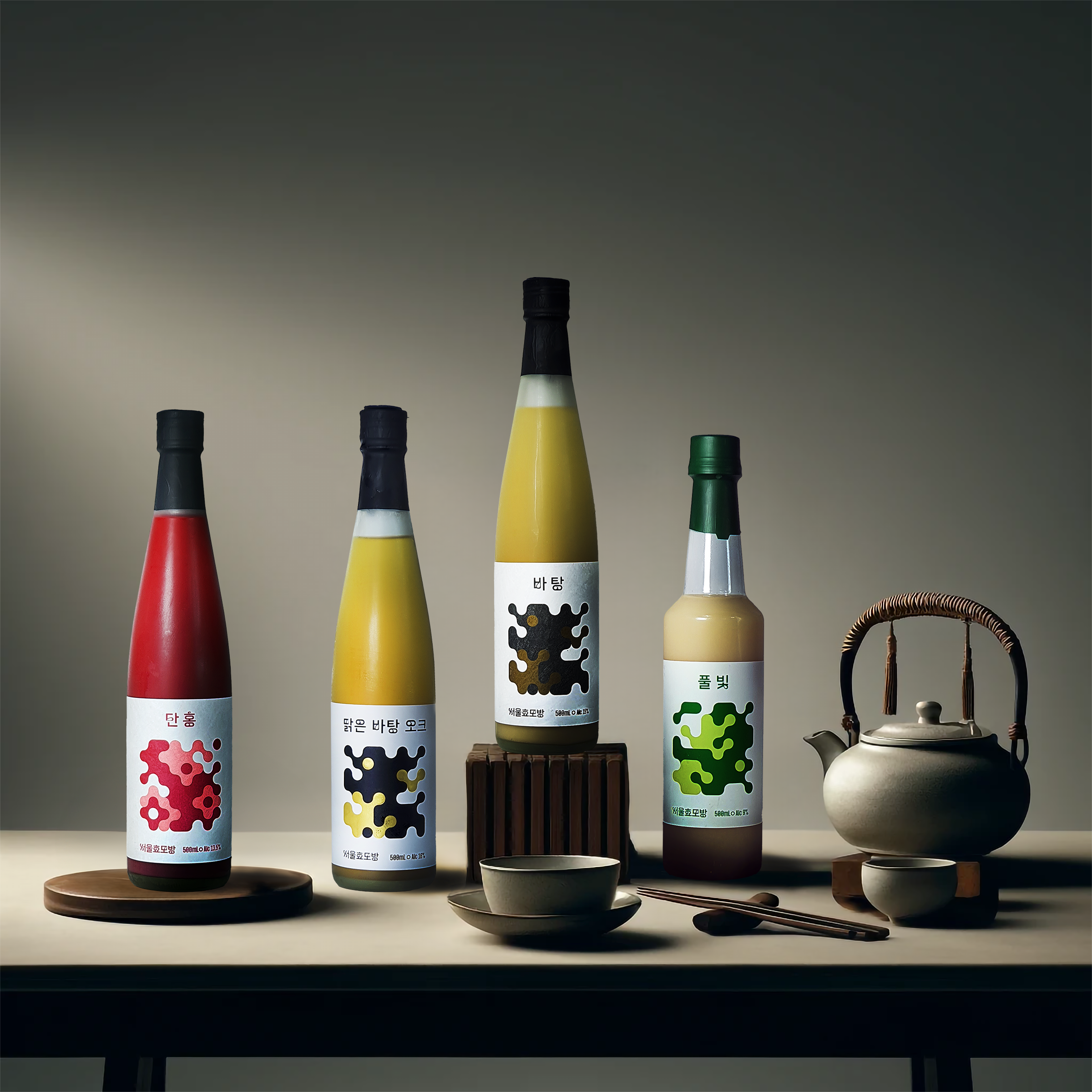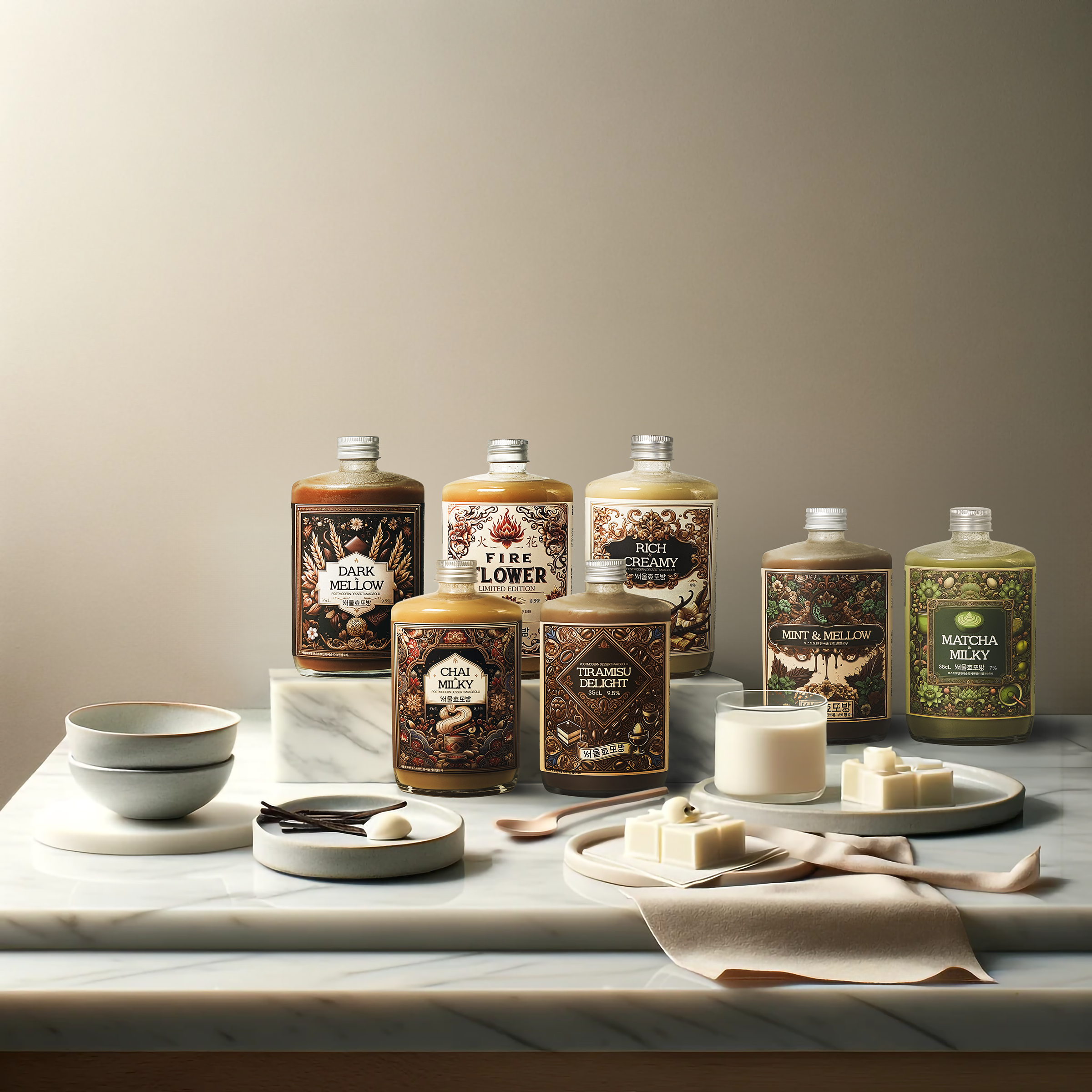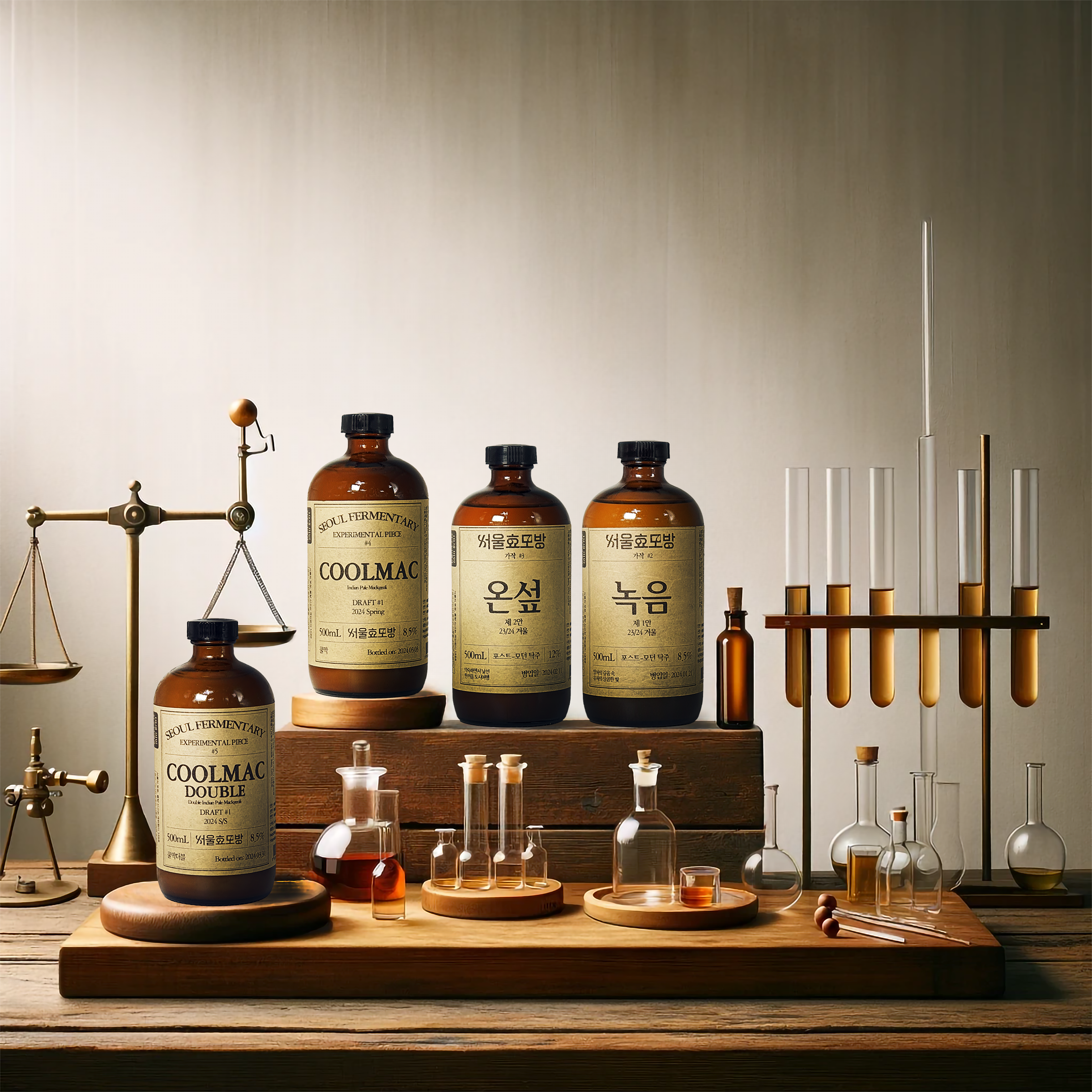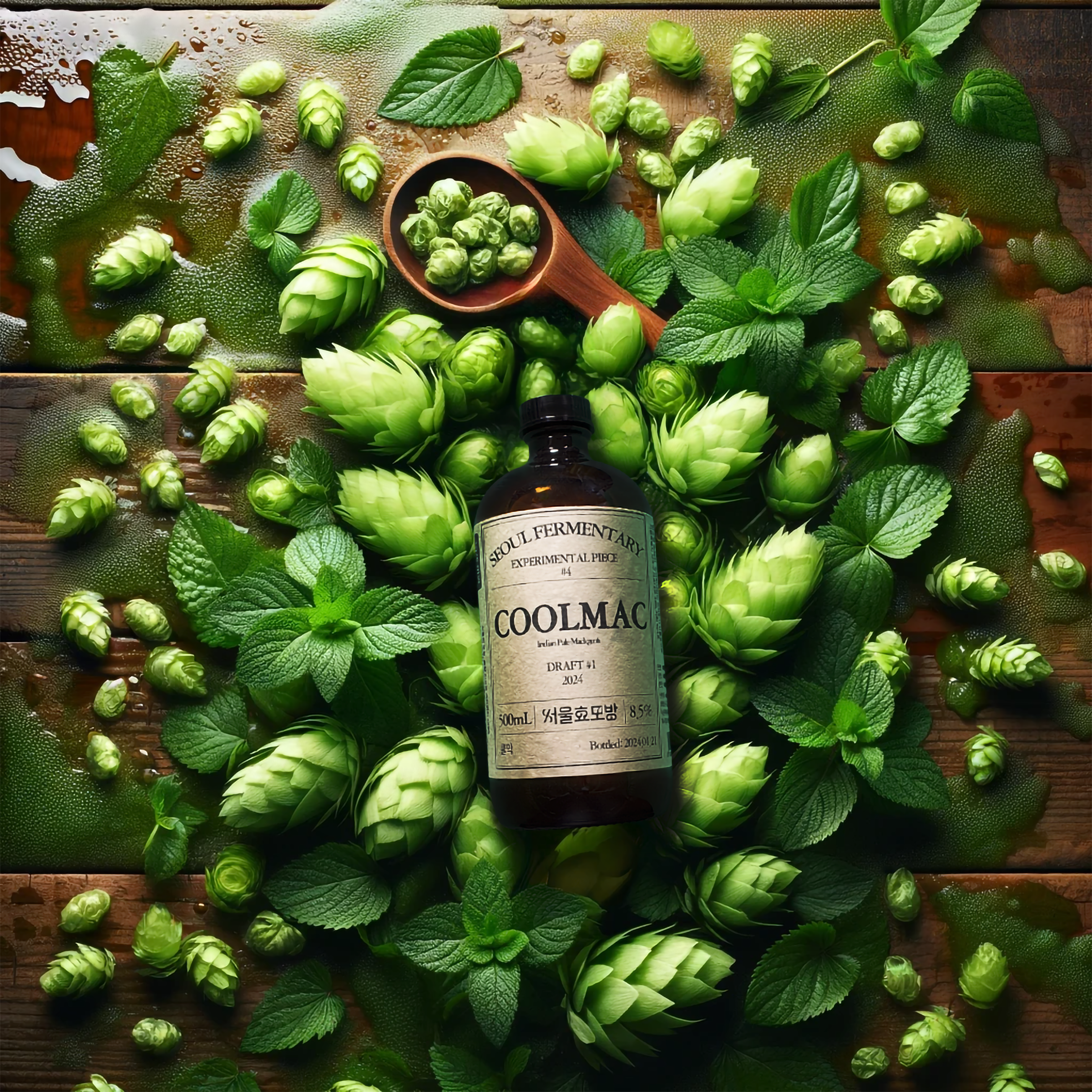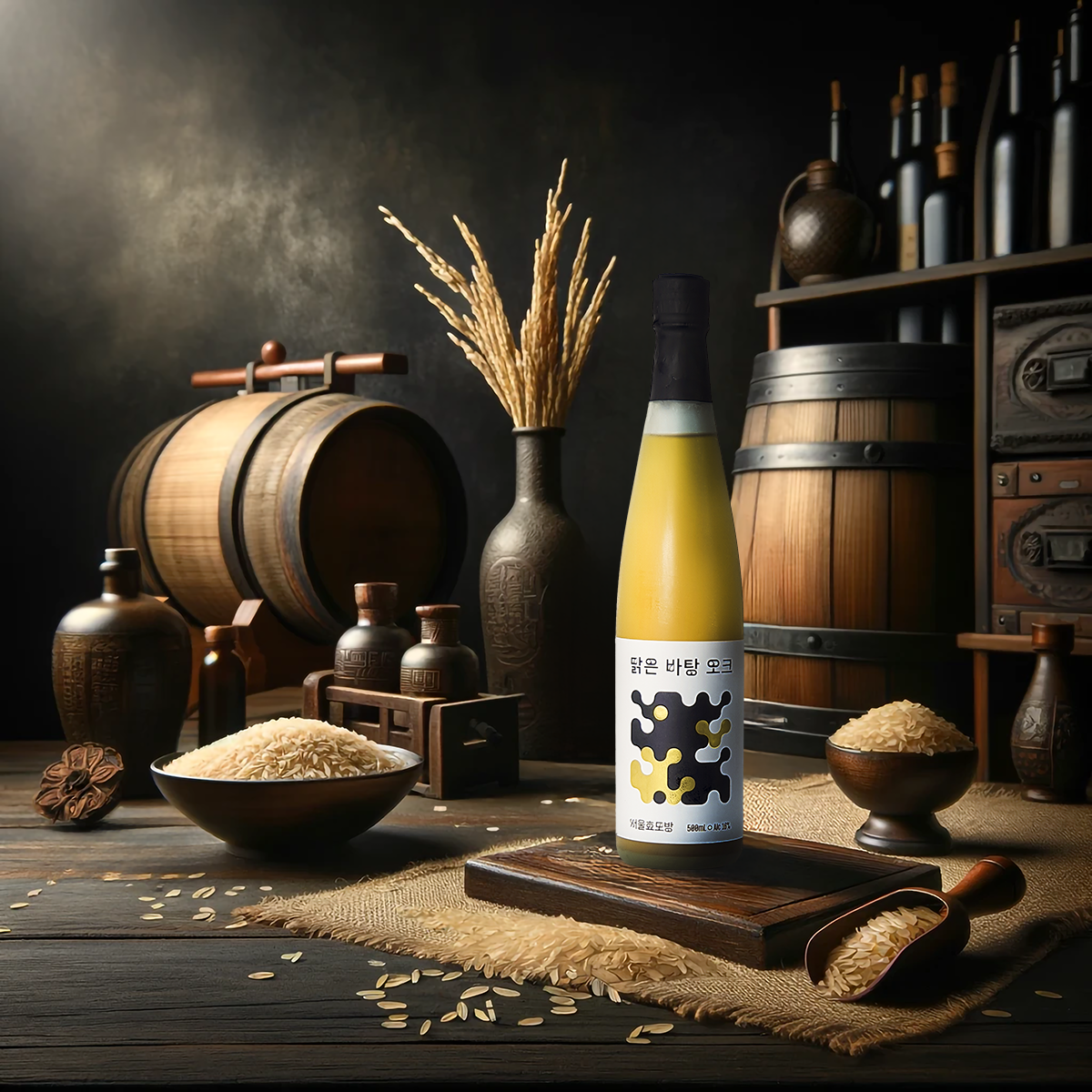Works
Designing Liquor Through Concepts
Reorganize Brewing Process
All of Seoul Fermentary's work begins with reimagining the brewing process. By designing new methods and equipment, we redefine our products and maintain quality while preserving the strengths of traditional techniques that add depth to our liquor. Through this, we have established a foundation for Korean liquor as a canvas to bring our concepts to life.
Layering of Sensations
Korean liquor, enriched with abundant proteins and fats, has a unique ability to build deep, complex layers of flavor and aroma, surpassing other types of alcohol. Korea's long-standing tradition of gayangju (literally meaning "homemade liquor") involves the use of diverse seasonal ingredients such as flowers, fruits, and herbs. This tradition has made Korean liquor exceptionally suited for creating intricate layers of taste and fragrance. Seoul Fermentary invites you to a symphony of flavors and aromas through this art of sensory layering.
Ingredient Philosophy
Seoul Fermentary aims to deliver multifaceted flavors and aromas, using no artificial additives. While additives can mask off-flavors with their intensity, they cannot match the depth of flavor that comes from fresh, carefully selected raw ingredients layered onto a well-crafted base liquor. Admittedly, expressing distinct characteristics through raw ingredients is a complex and challenging endeavor. However, it is made possible through Seoul Fermentary's meticulously designed processes and product development.
Modern Korean Liquor
Traditional liquors often fail to guarantee consistency because it's leaning on the trial-and-error approach to keep the depth, while modern makgeolli, optimized for easy mass production, has lost much of its richness. What we need now is a modern Korean liquor with a new identity—not as a tool, but as an experience. Seoul Fermentary inherits the tradition of gayangju, where a thousand households each brewed their own unique recipes, and reimagines it as conceptual products that only Korean liquor can create. In doing so, we present a new identity for postmodern Korean liquor.
